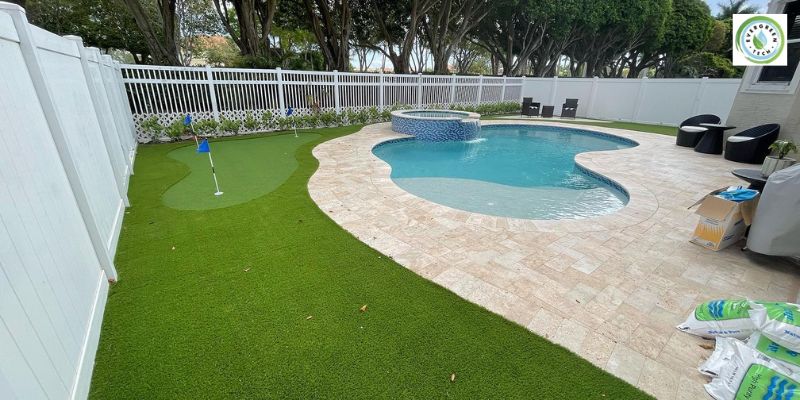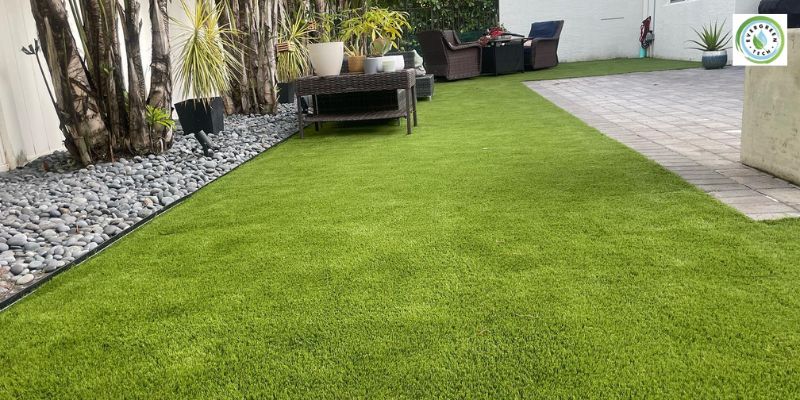Regarding landscaping, many homeowners and businesses are turning to artificial grass as a sustainable and cost-effective alternative to natural lawns. Beyond its appealing appearance, artificial grass offers various environmental and economic benefits that reshape how we think about outdoor spaces. In this article, we will explore the various advantages of artificial grass, from its positive environmental impact to the potential savings it can bring to your wallet.
The Rise of Artificial Grass

Artificial grass, also known as synthetic turf or fake grass, has come a long way since its limited use on sports fields and golf courses. It is increasingly utilized on residential lawns, commercial properties, and public spaces. The reasons behind its growing popularity are multifaceted, with a focus on both sustainability and financial efficiency.
Water Conservation

One of artificial grass’s most significant environmental benefits is its contribution to water conservation. Traditional lawns require substantial water to stay healthy and green, especially in regions with arid or semi-arid climates. This excessive water consumption contributes to water scarcity issues and burdens municipal water supplies considerably.
Artificial grass, on the other hand, requires no irrigation. Once installed, it remains lush and green without constant watering. This conserves water, reduces the strain on water treatment facilities, and helps prevent soil erosion caused by excessive watering.
Reduced Chemical Usage
Maintaining a natural lawn often involves using fertilizers, pesticides, and herbicides to keep it looking its best. These chemicals can leach into the soil and find their way into waterways, posing a threat to local ecosystems and wildlife. Additionally, the production of these chemicals is energy-intensive and contributes to greenhouse gas emissions.
Artificial grass eliminates the need for these harmful chemicals. Its synthetic fibers do not provide a habitat for pests, reducing the need for pesticides. This shift from chemical-dependent lawn care practices positively impacts the environment and public health.
Lower Carbon Footprint
The production and maintenance of natural lawns have hidden environmental costs. Lawnmowers, trimmers, and other equipment run on fossil fuels, emitting carbon dioxide and other greenhouse gases into the atmosphere. The transportation of grass seed, soil, and other landscaping materials also contributes to carbon emissions.
Artificial grass has a substantially lower carbon footprint. Once installed, it requires minimal energy and maintenance. The reduced emissions associated with lawn care equipment and the decreased need for frequent replacements of natural grass make artificial grass a greener choice for eco-conscious individuals and businesses.
Economic Benefits of Artificial Grass
Beyond its environmental advantages, artificial grass offers a range of economic benefits for homeowners and property managers. While the initial investment may seem higher than natural grass, the long-term savings and return on investment (ROI) make it a financially savvy choice.
Water Savings
One of artificial grass’s most immediate economic benefits is the reduction in water bills. Natural lawns can consume thousands of gallons of water yearly, particularly in dry climates where constant irrigation is necessary to keep the grass alive. With artificial grass, these costs are virtually eliminated. Homeowners and businesses can expect a substantial reduction in their water bills, leading to significant annual savings.
Lower maintenance costs
Maintaining a natural lawn can be a costly endeavor. Regular mowing, fertilization, weed control, and pest management all add up over time. In contrast, artificial grass requires minimal maintenance. Occasional rinsing to remove dust and debris and brushing to maintain its appearance are typically the only maintenance tasks needed. This simplicity saves money and frees up valuable time for homeowners and property managers.
Longevity and Durability
Artificial grass is designed to withstand heavy foot traffic and adverse weather conditions, making it a durable investment. On the other hand, natural lawns can quickly deteriorate, especially in high-traffic areas or during periods of drought. The need for reseeding, sod replacement, and extensive repairs can become costly.
When properly installed, artificial grass can last for 15 years or more. This longevity ensures that you get the most out of your initial investment, reducing the need for frequent replacements and additional expenses.
Increased Property Value
Installing artificial grass can enhance the curb appeal of a property, leading to an increase in its market value. Potential buyers or tenants are often attracted to artificial grass’s low-maintenance nature and its year-round green appearance. Additionally, the water savings associated with synthetic turf can be an appealing selling point in regions with water conservation regulations.
ROI Over Time
While the upfront cost of artificial grass may be higher than natural grass, it is essential to consider the long-term return on investment. Over the years, the savings on water bills, reduced maintenance expenses, and increased property value can more than offset the initial installation cost. Homeowners and property managers can enjoy artificial grass’s environmental and economic benefits for years to come.
Conclusion
Artificial grass is more than just a pretty green carpet for your outdoor spaces. It represents a shift towards sustainable landscaping practices that offer many environmental and economic advantages. From water conservation and reduced chemical usage to lower maintenance costs and increased property value, the benefits of artificial grass extend far beyond aesthetics.
As we become increasingly conscious of our impact on the environment and our budgets, artificial grass emerges as a practical solution that aligns with our goals. Whether you are a homeowner looking to save on water bills and reduce your carbon footprint or a property manager seeking to enhance the appeal and value of your premises, artificial grass is an intelligent choice that combines beauty with sustainability. Embracing this innovative landscaping option allows us to create greener, more cost-effective, and environmentally responsible outdoor spaces for a better future.
